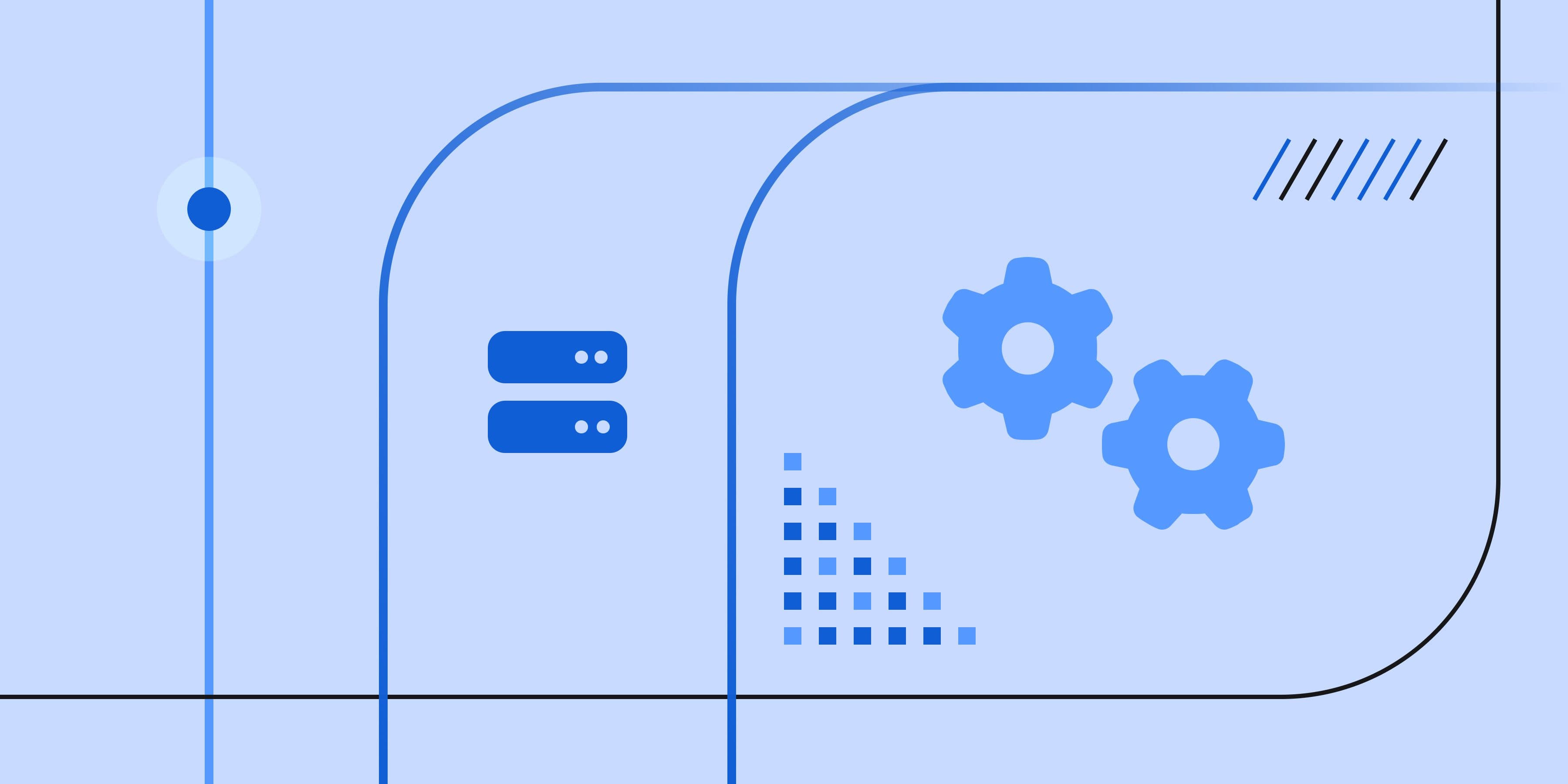What is Apache Airflow?

What is Apache Airflow?
A guide to Apache Airflow and exploring its use in orchestrating data pipelinesAs data sources continue to multiply, it becomes increasingly vital to automate, manage, and optimize the execution of data workflows. As a data engineer, you're undoubtedly familiar with the complexities of managing ETL (Extract, Transform, Load) processes and batch operations, especially with the rapid expansion of cloud data warehouses.
Apache Airflow addresses the need for a robust, scalable, and flexible solution for orchestrating data workflows. This article addresses its core functionalities and features, and explores how it makes your life easier in this age of big data and data science.
Introduction to Airflow
Airflow is an open source batch workflow orchestration platform. It is designed to programmatically author, schedule, and monitor workflows. Airflow’s extensible Python framework allows users to build workflows connecting with virtually any technology.
Originally developed at Airbnb by Maxime Beauchemin in October 2014, Airflow has gained widespread adoption in the data engineering and data science communities. Airflow was open source from the very first commit and officially brought under the Airbnb GitHub and announced in June 2015.
Inner workings of Airflow
Apache Airflow is an open-source workflow orchestration tool. Its extensible and scalable nature makes it a preferred choice among data scientists. It aids in data engineering tasks, efficiently handling ETL processes and managing data pipelines.At the core of Airflow lies Directed Acyclic Graphs (DAGs). DAGs are essentially workflows that define the sequence of tasks and their dependencies. Users can use Python code to define these DAGs, making it a seamless process to work with. The workflow can be as simple or complex as your use case demands, from data processing to managing machine learning models.Airflow is designed to scale and evolve with your needs. It offers a user-friendly interface and robust APIs for managing complex data and dependencies. The rest APIs can be used to interact with the system and automate tasks. Airflow's architecture is designed to manage workflows in real-time, making it incredibly efficient.AWS (Amazon Web Service), Azure, Google Cloud, and other cloud platforms support Airflow, proving its versatility. It can be easily integrated with other Apache Software Foundation tools like Spark and Hadoop, as well as other systems such as SQL, Hive, and GitHub. Apache Airflow's extensibility extends to its alerting capabilities too. Airflow integrates seamlessly with Slack for real-time alerting. Moreover, with providers like Astronomer, managed workflows are simplified.
Apache Airflow offers a comprehensive tutorial for beginners. This is an excellent resource for data scientists and DevOps looking to leverage Airflow's capabilities for data science projects.
Understanding Airflow Architecture
Airflow workflows are represented as DAGs where each node in the graph represents a task, and the edges define the dependencies between tasks. These tasks themselves describe what to do, be it fetching data, running analysis, triggering other systems, or more.
The Airflow Scheduler is responsible for both triggering scheduled workflows, and submitting Tasks to the executor to run. An executor handles running tasks submitted to it. Most production-suitable executors actually push task execution out to workers.
Airflow 2 introduced a lot of enhancements, among which is the ability to write workflows as Python scripts. It also hosts a web server where data scientists can monitor their workflows, DAG runs, and view metadata.
 Apache Airflow Diagram
Apache Airflow DiagramThe core components of Airflow are as follows:
- Scheduler: Triggers scheduled workflows and submitting tasks to executor
- Executor: Runs the tasks, mostly with the help of workers
- Web server: Provides a user interface (UI) to inspect, trigger and debug DAGs’ behaviours and tasks
- Folder of DAG Files: Read by the scheduler and executor (and any workers the executor has)
- Metadata Database: Used by the scheduler, executor and webserver to store state
Core Concepts of AirflowHere's a brief explanation of the fundamental concepts or core elements associated with Apache Airflow:
- DAGs: A DAG assembles tasks, establishing their dependencies and relationships to dictate their execution sequence in an Airflow workflow.
- DAG Runs: Whenever a DAG is run, a DAG Run is generated, and all the tasks enclosed within it are set into motion. The state of this DAG Run depends on the states of the tasks. Each DAG Run operates independently of the others, and so, multiple runs of a DAG can occur concurrently.
- Tasks: A Task is the basic unit of execution in Airflow. Tasks are organized into DAGs and are then set with upstream and downstream dependencies to dictate the sequence in which they should execute. There are three basic kinds of Tasks: Operators, Sensors and TaskFlow.
- Operators: An Operator is essentially a template for a predefined Task, that can be defined declaratively inside a DAG. Some of the common core operators are
- BashOperator - executes a bash command
- PythonOperator - calls an arbitrary Python function
- EmailOperator - sends an email
- The @task decorator - executes an arbitrary Python function (recommended over the classic PythonOperator to execute Python callables with no template rendering in its arguments)
Apart from the core operators, one can install many other operators from community provider packages, e,g, MySqlOperator, PostgresOperator, HiveOperator, SnowflakeOperator etc.
- Sensors: Sensors are a unique variety of operators within Airflow, that are engineered to wait until certain conditions are satisfied. Once these conditions are achieved, they are flagged as successful, triggering the execution of downstream tasks in the DAGs. Sensors can operate in two distinct modes. In the default mode 'poke', a worker slot is occupied for the complete duration of the sensor's runtime. The second mode, 'reschedule', is more efficient, as it only takes up a worker slot when it is checking the process and then sleeps for a set duration between checks.
- TaskFlow: Taskflow is useful for crafting clear and straightforward DAGs, particularly when the majority of the DAGs are composed of basic Python code as opposed to operators. This is done using the `@task` decorator. TaskFlow takes care of moving inputs and outputs between your Tasks using XComs, as well as automatically calculating dependencies.
- Schedulers: A scheduler supervises all tasks and DAGs, initiating tasks as soon as their dependencies are fulfilled. With a specific interval set (default being one minute), the scheduler reviews the outcomes from the DAGs, determining if any of the active tasks are ready for execution in the data pipelines.
- Executors: Tasks require executors to operate. These executors share a common API, allowing for easy swapping based on the specific requirements of your installation. Executors can be categorized into two types: those that execute tasks locally, and those that are designed to carry out tasks remotely.
- XComs: Xcoms is short for cross communications. As the name suggests, they allow communication between different tasks (by default tasks are completely isolated and may be running on a different machine).
- Variables: Variables are a global key/value store that can be queried from Airflow tasks. As opposed to XComs which are used for passing data between tasks, variables should only be used for global configurations.
- Params: Params serve as a method for delivering runtime configurations to tasks within workflows. Default Params can be configured in the DAG code. You can supply additional Params or override default values during runtime when triggering a DAG.
Key Benefits of Airflow
Apache Airflow offers several key benefits in the realm of data engineering and workflow management. Some of the notable advantages include:
Dynamic Workflow Orchestration
Airflow provides a platform for orchestrating complex workflows, allowing users to define, schedule, and monitor tasks in a coordinated and efficient manner. Airflow DAGs enable the creation of dynamic workflows, offering adaptability to changing requirements.
Flexibility and Extensibility
With a Python-based DSL (Domain-Specific Language), Airflow offers flexibility in expressing workflows. Its modular architecture allows users to extend functionality by creating custom operators and sensors.
Scalability
As data processing requirements grow, Airflow scales horizontally, enabling organizations to handle increasing workloads and execute tasks in parallel. This scalability ensures that the system can adapt to the evolving needs of data workflows.
Reusability and Maintainability:
Airflow encourages the creation of modular, reusable tasks and workflows. This promotes a more maintainable and organized codebase, reducing redundancy and making it easier to manage and update workflows over time.
Integration with External Systems
Airflow seamlessly integrates with various external systems, databases, and cloud services. This makes it a versatile choice for organizations with diverse technology stacks.
Community and Ecosystem
Being an open-source project, Apache Airflow benefits from an active and growing community. This community support results in regular updates, contributions, and the development of plugins, making Airflow a versatile tool with a rich ecosystem.
Airflow Use Cases
Apache Airflow is a versatile tool with a wide range of use cases in the field of data engineering, data science, and beyond. Below are some scenarios in which you can use Airflow:
ETL (Extract, Transform, Load) Workflows:
Airflow is widely used for orchestrating ETL workflows, automating the extraction, transformation, and loading of data from various sources, such as your CRM, your social media accounts, your ad accounts etc. into a data warehouse or other destinations.
Infrastructure and Workflow Automation
Airflow is utilized to automate and schedule business intelligence tasks, such as data extraction, report generation, and dashboard updates. Beyond data workflows, Airflow can automate infrastructure-related tasks, such as managing cloud resources, provisioning, and decommissioning servers.
Report Generation and Delivery
Automated report generation and delivery workflows can be orchestrated using Airflow, allowing organizations to schedule and distribute reports based on predefined timelines.
Alerting and Monitoring
Airflow can be configured to monitor various data-related processes and trigger alerts or notifications in case of issues or failures, enhancing system reliability.
Compliance and Governance
Airflow can be employed to enforce data governance policies and compliance requirements by automating workflows that validate data quality, lineage, and security.
Conclusion
Apache Airflow is a pivotal solution in the realm of data engineering, providing organizations with a powerful and flexible platform for orchestrating, automating, and optimizing complex workflows. Its dynamic Directed Acyclic Graphs (DAGs), coupled with extensive scheduling, monitoring, and extensibility features, empower users to efficiently manage a diverse array of tasks—from ETL processes and data migrations to machine learning pipelines and beyond. In conclusion, whether you are a beginner or an experienced data engineer, Airflow's robust features and scalable architecture are sure to add value to your data processing needs.
Recent Posts
 How we crafted a domain-specific language for JSON transformation at RudderStack
How we crafted a domain-specific language for JSON transformation at RudderStack Implementing Tag Revalidation Caching using NextJS and Sanity
Implementing Tag Revalidation Caching using NextJS and Sanity How We Optimized RudderStack’s Identity Resolution Algorithm for Performance
How We Optimized RudderStack’s Identity Resolution Algorithm for Performance